Tragidies Tht Have Been Broughten Up Again
Lessons From 10 of the Worst Engineering Disasters in US History
Tough lessons
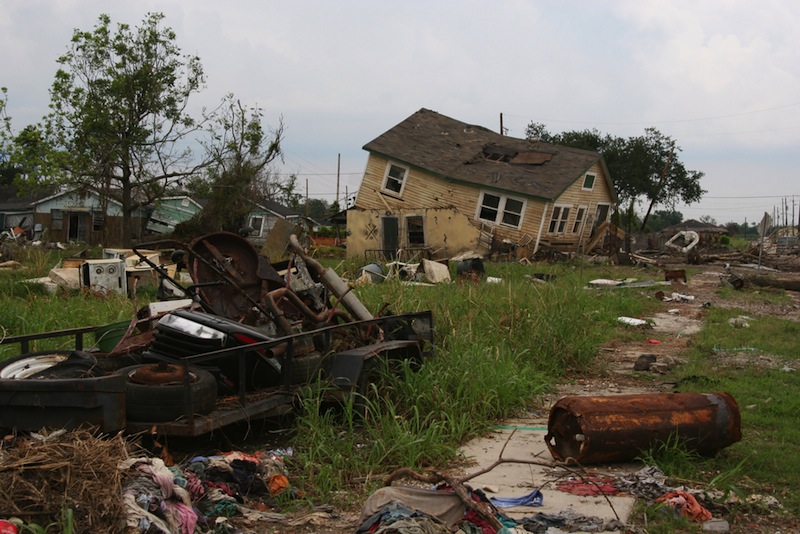
Things don't always work the manner they were intended to work. Sometimes those failures are almost imperceptible as they build incrementally, and other times, they happen in a terrible, overwhelming instant.
"You could fence, legitimately, that applied science is the written report of failure, or at to the lowest degree consideration of ways to avoid it," said Benjamin Gross, the Associate Vice President for Collections at the Linda Hall Library in Kansas Urban center, Missouri, which specializes in science, applied science and applied science.
These catastrophes are reminders that "engineering is a man activity," Gross told Live Science. "Disasters of this sort aren't but based effectually the technologies."
And and so, when calamity strikes, people often enquire three questions: "What went wrong? Who'south to blame? What could have been done differently?" Gross said. Given the complexity of modern engineering projects, answers can be hard to find, but they may influence and meliorate the adjacent attempts to cross the not bad expanses.
Here are x of the worst applied science disasters in U.S. history.
Hyatt Regency walkway plummet (1981)
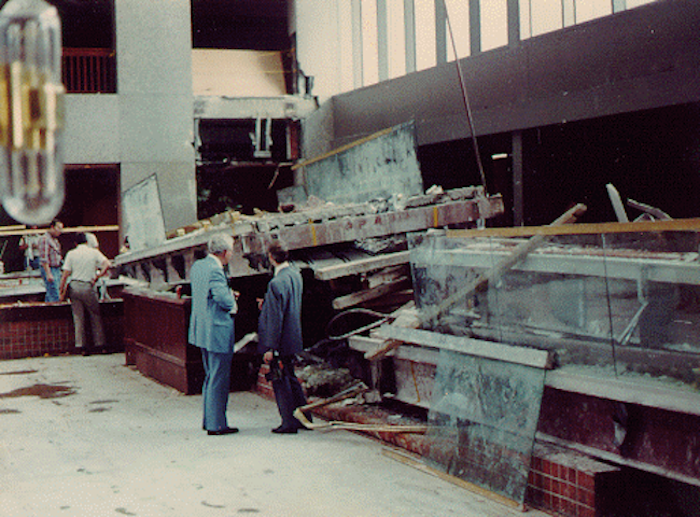
On July 1, 1980, the newly constructed Hyatt Regency Hotel in Kansas Metropolis, Missouri, opened to the public. The hotel featured several suspended walkways crossing its multistory atrium. Preliminary plans called for the fourth-flooring walkway to hang from the ceiling, connected by steel rods. In that pattern, the rods would barely concord the weight of the walkway itself, and would non have passed local building codes. Those supports were included in the terminal structure, and to make matters worse, the 2d-flooring walkway was suspended from the fourth-flooring walkway straight above it, doubling the load on those parts.
On July 17, 1981, the hotel was crowded for a dance. The linked walkways crashed to the dancefloor, killing 114 people and injuring another 200 revelers. The structural engineer in charge of the walkways blamed the design flaw on a breakup in communication, simply the Hyatt Regency walkway plummet has become a popular example written report in the ethics of engineering.
Johnstown Alluvion (1889)

On May 31, 1889, the Due south Fork Dam broke, unleashing 20 1000000 tons of h2o from the artificial Lake Conemaugh. The metropolis of Johnstown, Pennsylvania was fourteen miles (23 kilometers) downwards the Conemaugh River, and the waters destroyed 4 foursquare miles (10 foursquare kilometers) of the city's downtown. In total, the overflowing killed 2,209 people, and bodies were later found every bit far away equally Cincinnati.
The dam was owned by the South Fork Fishing and Hunting Club, which counted many of Pittsburgh's financial elite among its members. In the aftermath, the tragedy was publicly blamed on the lodge'southward failure to properly maintain the dam, but courts maintained information technology was an "act of God."
Space Shuttle Challenger (1986)
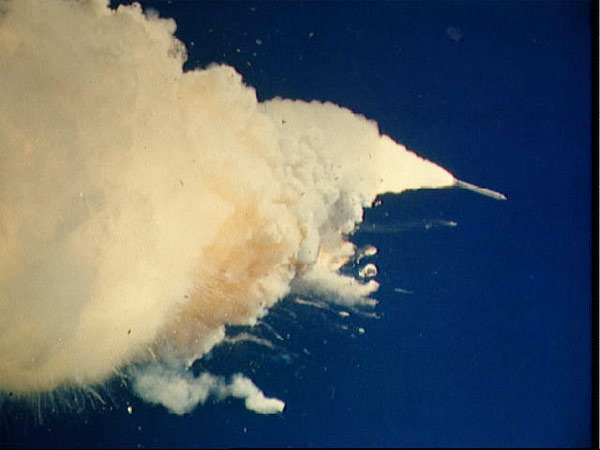
The 25th flight of the space shuttle Challenger, STS-51L lasted just 73 seconds on Jan. 28, 1986. Shortly after liftoff, smoke briefly appeared at a joint on the correct rocket booster. After a infinitesimal, flames appeared most the same location and spread. Seventy-2 seconds after launch, the shuttle was obscured by white smoke, followed past an explosive fireball. The 7 crewmembers aboard Challenger were killed.
An investigation into the accident, the Rogers Commission Report, adamant that the O-rings used in a joint seal on the rockets were inappropriate for the ambient temperature at the time of launch: 36 degrees Fahrenheit (ii.ii degrees Celsius). In the cold, the rings reacted differently to the compressive forces of liftoff. The commission found that some engineers were aware of the consequence, and had advised against launches in ambient air temperatures below 53 degrees Fahrenheit (12 degrees Celsius).
Tacoma Narrows Bridge (1940)
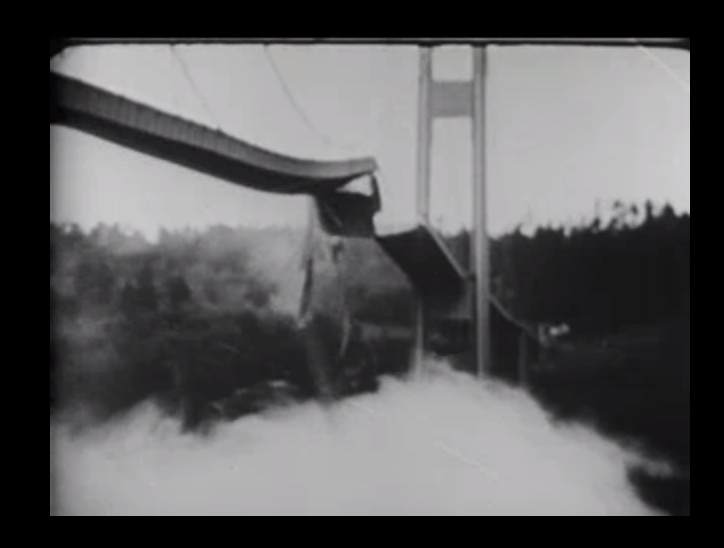
Spanning a department of the Puget Sound in Washington, the Tacoma Narrows Bridge became the third-longest suspension bridge in the earth upon its completion in 1940. But its ambitious pattern — lighter, thinner and more flexible, with the deepest ever piers driven into the waters below — overlooked the winds that would often buffet the bridge.
Wind acquired the bridge to move, creating an undulation that ran its length. When a cable snapped, that moving ridge combined with a twisting motion, known as torsional palpitate, that kept edifice upon itself. The bridge collapsed on Nov. seven, 1940, just iv months after it opened to traffic. In that location were no human fatalities, but the accident spurred involvement in modeling the effects of wind on big structures.
New Orleans Levees (2005)

When Hurricane Katrina striking New Orleans on Aug. 29, 2005, it killed hundreds of people and displaced many thousands more. The levees surrounding the city became a point of scrutiny in the backwash of the destruction. A study from a team that included engineers from the University of California, Berkeley and the American Order of Civil Engineers identified several types of flaws in the levees before long after the hurricane hit.
Every bit waters rose over the tops of levees, also known every bit overtopping, they eroded unprotected embankments on the other side, weakening the walls. Engineers likewise found weak points where different sections of inundation protection met. Major breaches also occurred where information technology appears the levees may have been built on poor foundation soil that was vulnerable to storm surge.
The rebuilding of the levees, and with them the urban center of New Orleans, have sparked debate over how infrastructure should account for natural disasters.
St. Francis Dam (1928)
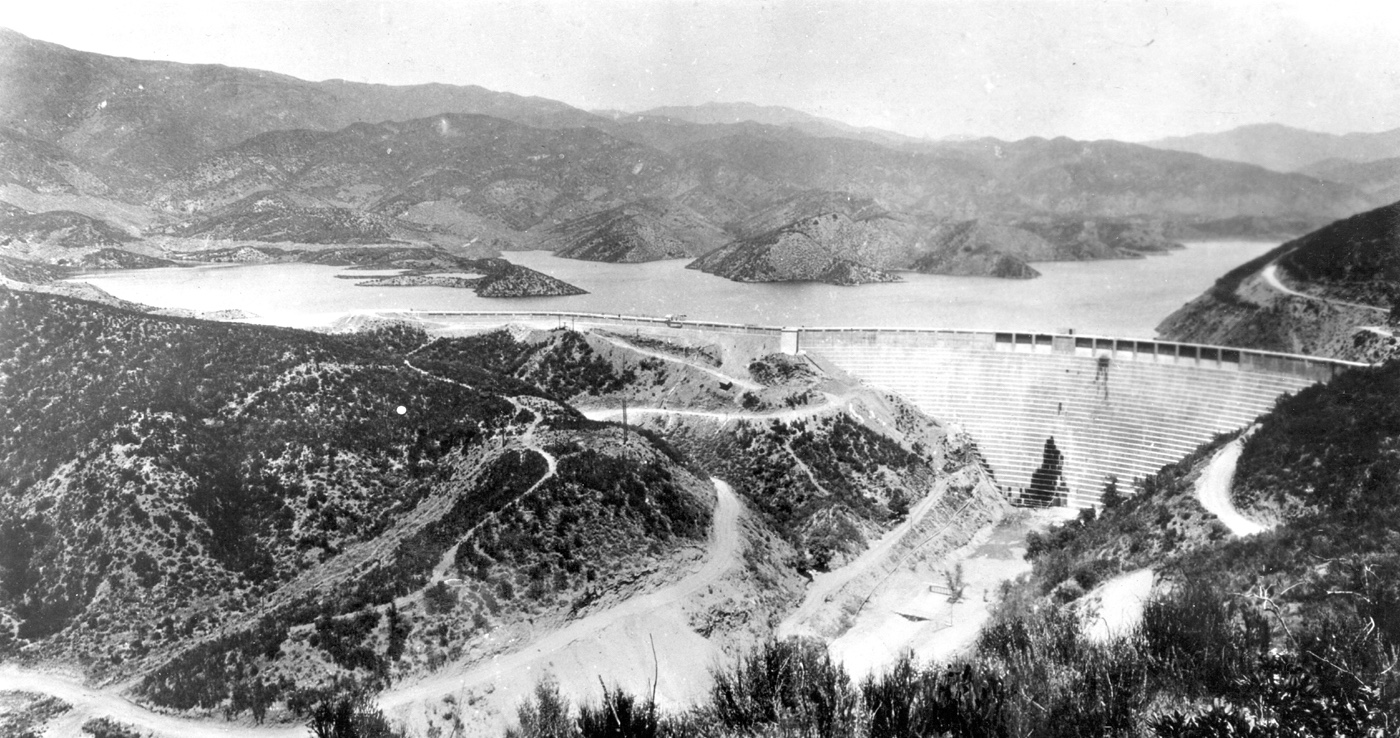
The St. Francis Dam was completed in 1926 to provide water for the booming population of Los Angeles. Overnight on March 12, 1928, the dam failed, washing out its contents 52 miles (84 km) to the body of water. The accident officially killed 432 people, but an unknown number of Mexican migrant laborers were also caught in the flood zone. The failure of the St. Francis Dam has been called the deadliest applied science disaster of the 20th century.
Although there were aspects of the design and construction that would be questionable today, engineers didn't fully account for the geological features of the dam site. An ancient landslide created the chokepoint in the San Francisquito Canyon, which made it both an excellent location for a dam and a poor foundation for the construction.
Space Shuttle Columbia (2003)

The infinite shuttle Columbia launched on its 113th flying, STS-107, on Jan. 16, 2003. The 24-hour interval after launch, a scheduled review of takeoff footage revealed that foam debris from the external fuel tank had struck the left wing of the shuttle. Similar debris had been seen in previous takeoffs. Repeated requests to capture detailed images of the spacecraft in orbit to assess the extent of the impairment were denied. On Flight Day eight, NASA's Mission Control informed the crew of the droppings touch, and reported that at that place was "absolutely no business organization for entry" with regards to the estrus-resistant tile paneling on the shuttle'southward fly.
Columbia was scheduled to country on Feb. 1, 2003, after 16 days in orbit. As the shuttle re-entered Earth's atmosphere and passed over California, ground observers saw a vivid trail of debris trailing the ship. By the fourth dimension the space shuttle flew over Texas, advice with the coiffure was failing. Soon afterwards, Columbia disintegrated midflight, killing its 7-person crew.
The Columbia Blow Investigations Board, ready to investigate what went wrong, concluded that organizational issues contributed to the fatal incident. The panel, which released its study in August 2003, made specific recommendations (such as improve pre-flight inspection routines) to improve the safety of future shuttle flights.
Ford Pinto (1971-1976)

When the Pinto made its debut, the Ford Motor Company knew their new car design wasn't perfect. The fuel tank was easily punctured by nearby bolts, which left the vehicle susceptible to bursting into flames in the event of a rear-end standoff.
Just, the Ford Pinto, marketed for the model years 1971 to 1980, was conceived as an cheap, loftier-performance subcompact car, and that vision did non include safety as a selling point. And then, a decision was made, weighing the cost of $11 in parts per vehicle against the risk and expense of litigation over death and serious injury. The eventual adoption of new safety standards in the 1977 model year forced Ford to alter the pattern of the Pinto.
Iii Mile Isle (1979)
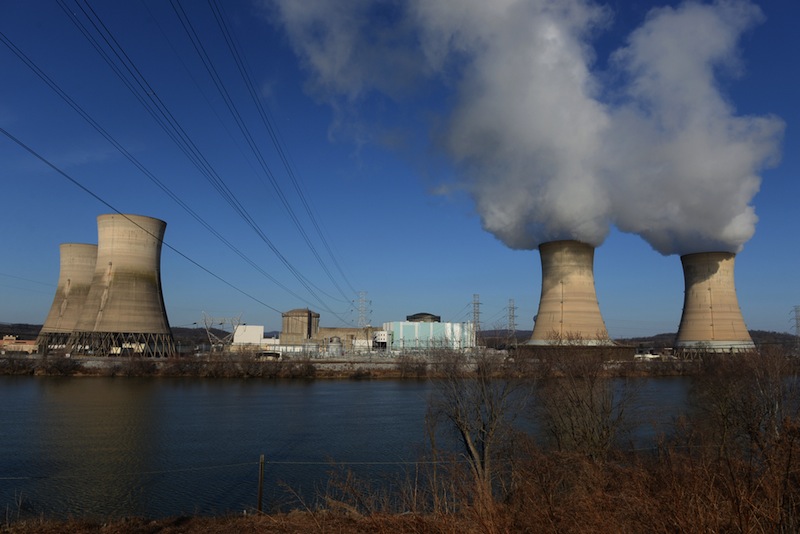
At 4:00 a.m. on March 28, 1979, a h2o pump in ane of the nuclear power generators at Three Mile Island, in central Pennsylvania, malfunctioned. Some of the facility's prophylactic procedures worked equally intended — for instance, a failsafe stopped the fission procedure in the reactor in response to an overheating steam generator — but workers forgot to open the valve for the emergency water pump later testing it just days earlier.
Equally a consequence, at that place was no water flowing to the steam generator (h2o creates steam for a turbine and cools parts of the generator). Somewhen, the entire system overheated, causing a partial meltdown.
The accident exposed the public to some radiation, near 3- to 6-months worth of normal background radiation dose in the region, according to a report from Dickinson College. But during the tense 10 days until the situation was brought under control, public attending centered on fears of a more dramatic event, such as an explosion in the reactor.
Honey Canal (1978)
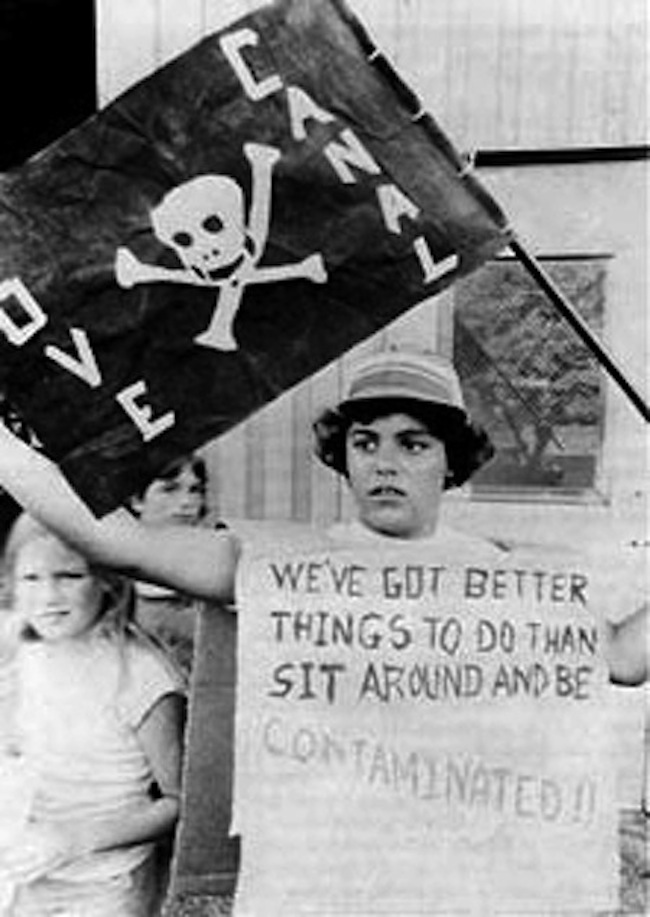
From 1942 to 1952, a ii-mile-long (three.2 kilometers) ditch once planned every bit the beginnings of a canal was used every bit a chancy waste landfill. In 1953, after dumping more than 21,000 tons of hazardous chemicals into the would-be canal, the Hooker Chemic Company covered the dump site in the Dear Canal area of Niagara Falls, New York. Houses and a public elementary school were later built in the surrounding acreage.
Over fourth dimension, it became evident that the landfill had been managed improperly. In the 1960s, residents began noticing the effects of contamination. There were noxious odors and afterward, elevated rates of cancers and nascency defects. In 1978, heavy rains unearthed leaking drums of chemicals, which pooled in foul, burning puddles throughout the neighborhood, according to the U.Due south. Ecology Protection Agency (EPA).
The response from the country and federal governments was unprecedented, and the site became influential in the acknowledgment of the public wellness threat posed by improperly stored industrial chemical waste product. In 2004, the Beloved Canal site was removed from the EPA's Superfund List, which catalogues polluted locations that require long-term cleanup efforts.
dickersonwallecurese.blogspot.com
Source: https://www.livescience.com/55619-engineering-disasters.html
0 Response to "Tragidies Tht Have Been Broughten Up Again"
Post a Comment